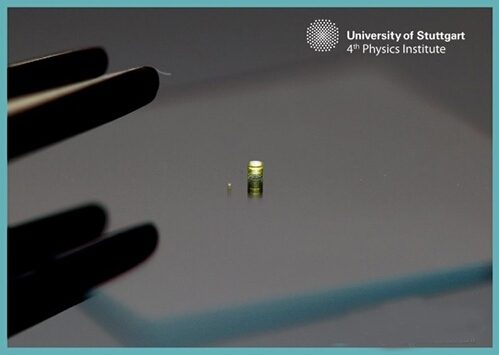Scientists have used 3D printing technology to create the world's smallest lens - only twice as wide as a human hair. The makers say the lens could lead to cameras the size of a grain of salt and could revolutionize medical imaging, covert surveillance, robotics and autonomous driving.
On June 27, 2016, Dr. Timo Gissibl of the University of Stuttgart (Germany) and his colleagues published a paper in Nature Photonics explaining how they created this triplet lens by fitting three lenses into a pinhole camera and combining it with 3D printing technology. This "needle" device can print images directly onto sensors, such as those used in digital cameras or endoscopes for internal examination of organs. The technology could also be deployed on security monitors or to add "autonomous vision" to mini-robots.
Dr. Gissibl and colleagues wrote: "Current lenses have production limitations in size, shape, and dimensions. Producing multi-lenses with aspherical shapes requires high optical performance and correction of imaging differences during wide-angle imaging. So we propose a new concept in the field of optics that combines 3D printing technology with complex lens technology, opening up new horizons for 3D microprinting and nano-optics." The team believes that the 3D printing method they designed will represent "a paradigm shift."
In experiments they found that a 3mm object in the lens could be successfully replicated at the other end of a 1.7m tube. This "imaging system" is thin enough to fit into a commonly used syringe needle, delivering the desired object into human organs and even into the brain.
"Endoscopic applications will allow non-invasive and non-destructive examinations," they wrote.
Dr. Gissibl added, "The unprecedented flexibility of our approach paves the way for the development of endoscopes, cell biofiber imaging systems, novel illumination systems, microfiber traps, integrated quantum emitters and detectors, and autonomous vision for micro-drones and robots."


